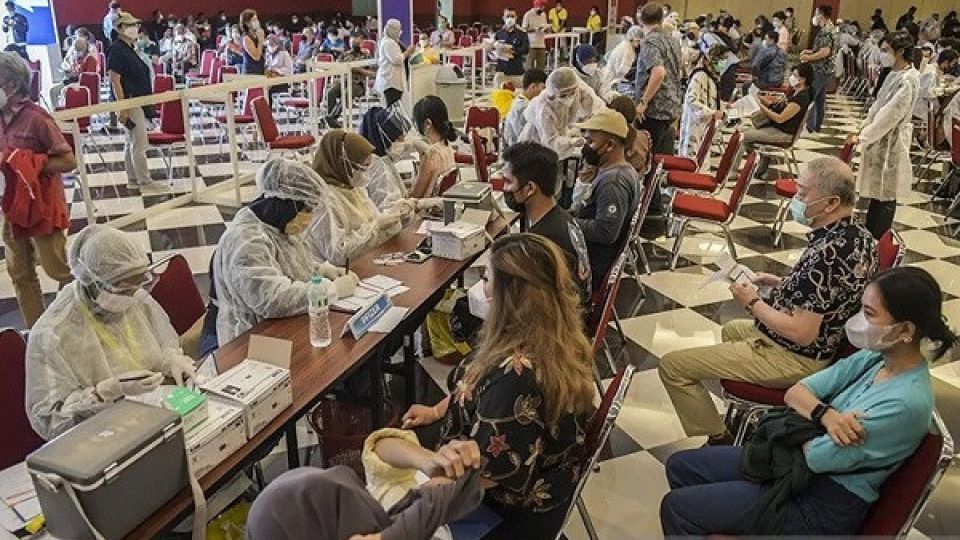November 22, 2022
JAKARTA – The COVID-19 pandemic has been a key catalyst to reinvigorate the global vaccines market as pharmaceutical companies, armed with deep expertise and tailored strategies, rediscovered vaccines as an important business.
As there are massive unmet needs for certain infectious diseases around the world, especially in low and middle-income countries, which present a huge market with future growth potential.
Pharma companies are bullish about what’s next. Available data suggests that the global vaccines market is expected to grow to USD$125.49 billion in 2028 from $61.04 billion in 2021 at a compound annual growth rate (CAGR) of 10.8 percent largely driven by increased awareness about vaccination and immunization benefits in emerging markets. According to Fortune Business Insights, the global vaccines market value was recorded at $55.4 billion in 2020.
The opportunities are self-evident.
Take, for example, Japan’s Takeda Pharmaceutical’s dengue fever vaccine Qdenga. The company recently announced that the vaccine has been approved and will be launched in the near future in Indonesia. According to reports, the pharma company expects to generate up to $1.6 billion in annual sales from the vaccine in about 30 countries.
Another example is the British drugmaker GlaxoSmithKline. In June this year, the company announced that its respiratory syncytial virus (RSV) vaccine for older adults showed “statistically significant and clinically meaningful efficacy” during its phase three results. RSV is a common contagious virus affecting the lungs and breathing passages.
Every year, RSV causes over 360,000 hospitalizations and 24,000 deaths globally in adults. Currently, there are no vaccines or specific treatments for RSV, one of the world’s major infectious diseases.
Besides GlaxoSmithKline, a fleet of global pharmaceutical companies such as Pfizer, Moderna, Johnson & Johnson, and Bavarian Nordic—the only pharma company with an approved vaccine (Imvanex) for monkeypox—are all working on RSV vaccines for older adults.
Increased awareness among patients for vaccine adoption post-pandemic has made pharmaceutical companies invest time, money, and resources in the vaccine business.
Global pharmaceutical companies have realized the potential of a promising vaccine in a post-COVID world. This has led to redesigning research and development (R&D) facilities, ramping up manufacturing units, and acquiring niche pharma and biotech start-ups to strengthen the R&D pipeline and foster innovation.
Early this year, GlaxoSmithKline announced about $1.2 billion investment in its R&D over a period of ten years to boost its research work focusing on new vaccines and medicines to prevent and treat malaria, tuberculosis, HIV, neglected tropical diseases, and antimicrobial resistance, which accounts for more than 60 percent of the disease burden in many lower-income countries.
Currently, the British pharma company’s Global Health innovation hubs have a pipeline of more than 30 potential vaccines and medicines targeting 13 high-burden infectious diseases.
Another key focus area for pharma companies is accelerating manufacturing units. According to a Bloomberg report, Pfizer will likely pump in $470 million to expand its vaccine research facilities near New York City. The investment is expected to provide Pfizer “an edge” over the competition in the mRNA space, the technology behind its coronavirus vaccine. Pfizer aims to repeat its COVID-19 success by applying mRNA technology to other diseases.
This August, GlaxoSmithKline acquired the United States-based start-up Affinivax to strengthen its research pipeline. Affinivax is developing a pneumococcal vaccine that offers protection against illnesses such as pneumonia, meningitis, and others. Pfizer’s Prevnar and Merck’s Vaxneuvance are already dominant in this space.
For developing countries, participating in this global research will also benefit the research community, allowing the public access to potential lifesaving vaccines, and developing a knowledge-based economy.
The recent pandemic has increased the importance of vaccination to safeguard against infectious diseases. According to Airfinity, a London-based data firm, over 100 mucosal vaccines for COVID-19 are now in the development stage globally, and around 20 have reached clinical trials in humans.
Recent data from World Health Organization reveals that the COVID-19 vaccination rates in low-income countries stand at 19 percent, compared to almost 75 percent in high-income countries. The roll-out of new lifesaving COVID-19 treatments, including oral antivirals in low and lower-middle-income countries, remains limited or non-existent.
If the government and private sector, including healthcare providers, local authorities, and logistics, work together, low-income countries will get vaccines for everyone.
For example, an international organization named Gavi connects the public and private sectors to provide impartial and sustainable use of vaccines. And many other organizations and foundations can bridge the supply gap between wealthy and poor countries.
Besides COVID-19, Southeast Asia observes many mosquito-borne infectious diseases such as zika, dengue, malaria, and chikungunya that have become rising public health concerns infecting millions of people. They provide a large market for vaccine manufacturers.
According to the WHO, about 70 percent of the disease burden of dengue rests in Asia. Malaria causes an estimated 219 million cases globally, resulting in more than 400,000 deaths yearly.
Seeing more room for growth, Japan’s Takeda is also exploring a potential solution targeting the zika virus.
While the pharmaceutical majors have an entire value chain, such as R&D, manufacturing, distribution, and sales, every country is different. Smaller biotech companies only have part of the value chain. They, therefore, need to partner with larger players.
Pricing is also a key factor for higher adoption among the masses.
Vaccines promise a brighter future for everyone, and their successes start from the beginning by ensuring that the local population, including researchers and the public, are supportive of the research. Further strategy post-development, including leads to sales and adoption, will also depend on the type, pricing, and accessibility for the public.
***
The writer is a manager at global management consultants Arthur D. Little.


